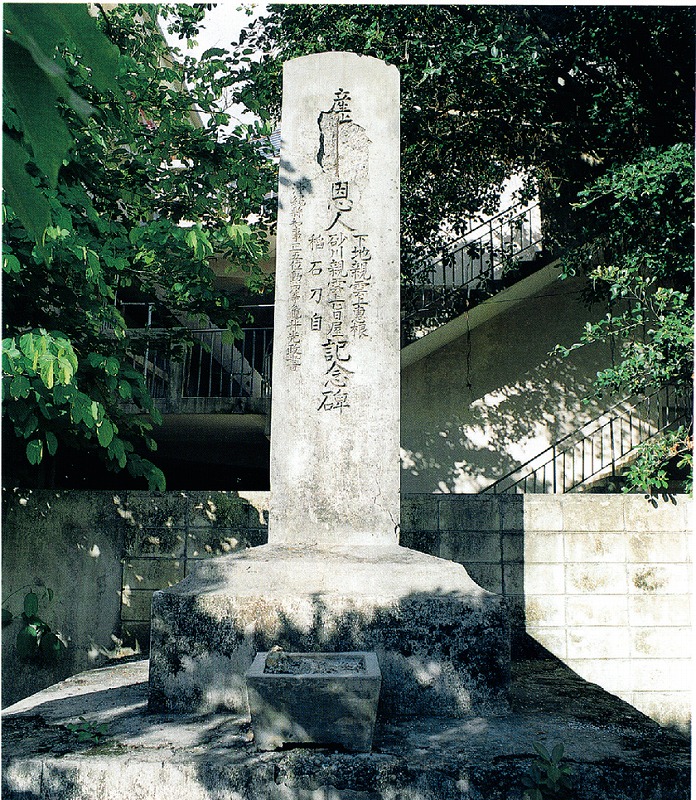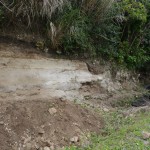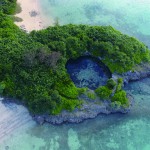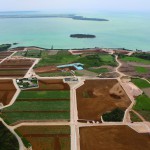【Designated by the City:Classical Literature】Monument for the Sangyokai-no Onjin (Benefactors of the Industrial World)
This monument was erected within the grounds of the Miyako Shrine when it was constructed in July 1925, in commemoration of the three men, Shimoji Pechin Keikon, Uruka Pechin Shioku, and Inaishi-toji, who laid the foundations for industries in Miyako. The measurements of the concrete, rectangular monument are: 264cm in height, 63cm vertically, and 27cm in width.
The inscription is described by Anko Majikina, a well-known historian of Okinawa. On the front of the monument it is written産業界之恩人・下地親雲上恵根、砂川親雲上旨屋、稲石刀自・記念碑, that this monument is in commemoration of Shimoji Pechin Keikon, Uruka Pechin Shioku, and Inaishi-toji, who laid the foundations for industries. Also inscribed are the characters: 沖縄県知事正五位勲四等亀井光政書, that it was written by Mitsumasa Kamei, the Governor of Okinawa Prefecture, awarded Fifth Rank in the Fourth Class of Order. On the way back from a tributary trip in 1655, Shimoji Keikon brought back pine saplings which he planted in the hills of Otake-yama, behind Shimajiri. Also in 1681, he planted 2000 more in Sugama village, making way for silviculture in the area. In 1594, the ship that carried Uruka Shioku returning from a trip as an official overseeing the presentation of tributes drifted to China. Upon his return three years later, he brought back sweet potato vines and encouraged the distribution and production of these potatoes. As for Inaishi, he created the textile, Ayasabifu, and presented it to the Ryukyu King, paving the way for the creation and advancement of the Miyako Jofu textiles. The contents inscribed on the monument commend the contributions and attributes the development of Miyako’s industries today to the three men mentioned. By informing the people of today and tomorrow, the monument attempts to teach the path of gratitude and patriotism.
This is an important epigraph to learn about the trends of the people of Miyako at that time.
≫View on a Google Map
 宮古島アプリの綾道(あやんつ)トップページ
宮古島アプリの綾道(あやんつ)トップページ 宮古島アプリの綾道(あやんつ)の内容
宮古島アプリの綾道(あやんつ)の内容 宮古島の3つのルート
宮古島の3つのルート 宮古島市長のあいさつ
宮古島市長のあいさつ 宮古島文化遺産紹介
宮古島文化遺産紹介








